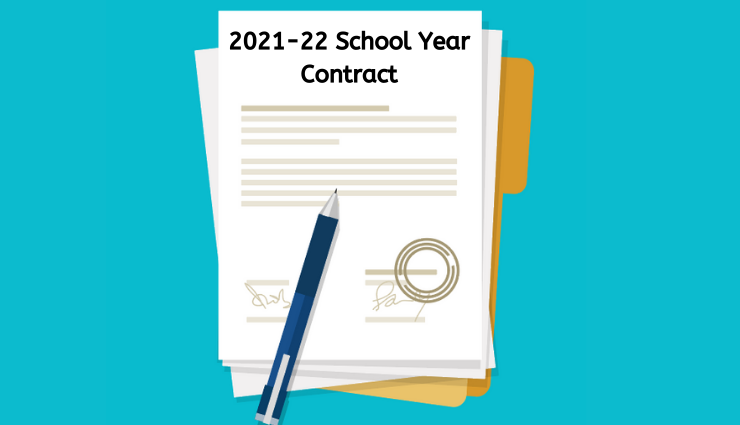Assessing the Hiring and Retention Landscape

We all know well the challenges schools have faced over the past two years — and those that continue now as a spill-over from the pandemic and the concurrent political storm. In the midst of the hiring season for the 2022-23 school year, we’re also aware that many teachers and administrators are just plain tired or worn out from it all.
Teachers and administrators, especially in public schools, are leaving the profession in alarming numbers or retiring earlier than planned. According to a recent Atlantic article, nearly a million people quit their jobs in public education in 2021. The shortage was so dire in New Mexico that the state encouraged members of the National Guard to volunteer as substitute teachers. Meanwhile, significantly fewer undergraduates are signing up for careers in education.
Independent schools have been experiencing their own faculty transitions and losses. As we write this, the national and regional job postings are as high as we’ve seen them at this point in the year — and some schools will likely be scrambling straight up to the start of the coming school year to fill all openings.
The core issues are clear. On the one hand, the pandemic forced educators to completely shift their way of teaching while simultaneously worrying about their own health and the health of their families. If the isolation, the added hours of work, the exhaustion of being on Zoom all day, and the inability to connect deeply with students wasn’t enough to drive educators to the brink, the fact that schools have suddenly been caught in the political crosshairs — with public criticism and outright attacks coming intensely from the right and left— has led many teachers to say they are done.
For those educators who held on through remote learning, hoping that in-person education this year would settle down into some semblance of pre-pandemic education, the experience has often been disappointing. As psychologist, author, and school consultant Rob Evans points out, we’re experiencing the long shadow of the pandemic. Evans has consulted with hundreds of schools over the past year and is well aware of the collective struggles. Students may have returned to in-person learning this school year, but many came back with new sets of challenges for teachers. It turns out the year of distant learning set students back not only academically but also in overall school readiness. “Eighth grade teachers are finding they are teaching students with eighth-grade bodies who are behaving like sixth graders,” Evans notes. “This is completely new territory for them.” The result is that teachers are struggling to help many students get back on the developmental track while also managing the other challenges that have found their way into the classroom.
What’s a school leader to do?
So, What Now?
The first step, experts tell us: don’t panic.
While even the most stable of schools have found themselves upended by the two years of a life-threatening pandemic and toxic politics, we also know that the education of children for citizenry and happiness will always be essential. Yes, most independent schools have been hard hit. But the kind of education independent schools offer — a well-balanced curriculum and small student-teacher ratio linked to a clear mission that prepares students well for life and learning beyond school — will continue to be in demand. Indeed, it will be essential in the post-pandemic world.
While it’s impossible to predict the future, we don’t know anyone who thinks schools — public and private — won’t be here in the years to come. For all schools, but especially those worried about their future viability, the question before us is one of how we make schools function as well as possible given the circumstances.
It would be nice if there were a magic formula leaders could tap into to shift their schools instantly into warm, easy-going learning communities in which all students are up to speed academically and everyone feels happily engaged. But we can’t control pandemics and we can’t control society. What schools can do is get clarity about what they can control. To this end, experts also tell us, the second step is to remember where we have been — and let our missions, histories, and stories lead us to where we need to go now. Think of the work we do now as a matter of “building back better” in what is clearly a new era for education.
The overall goal — the pathway to success — is a heightened focus on mission and purpose and on building the strongest possible community in support of that mission. The pressures we’ve been under are a reminder to remember organizational expert Jim Collins’s notion of the flywheel — evolving our program around our core mission, our non-negotiables that are essential to who we are.
Addressing the Elephants in the Room
Beyond doubling down on our core missions, it helps to think about the challenges teachers say they are facing and what it is that keeps them engaged. A recent web presentation from the Harvard Graduate School of Education explored the question: Why are teachers staying at and leaving schools?
The bottom-line, says Heather Hill, a professor in teaching, learning, and practice at Harvard’s Graduate School of Education, is that teachers in the public school arena are feeling a loss of autonomy and control in the classroom — driven to a great extent by increasing state mandates that overpower teacher control and make it tough to be flexible in meeting the needs of students. They are also feeling the weight of technology overload and its demand on their time.
What keeps teachers in the profession, she says, are six key elements:
- The chance to impact the system for the better.
- The opportunity to collaborate with colleagues and see positive results.
- Being in schools with supportive leadership — principals who have the teachers’ backs and protect them from mandates.
- Feeling as if they are growing professionally.
- Having an administration that offers a high level of transparency and good communication.
- Being in schools that offer mindfulness practices and interventions that lead to better outcomes for students.
To attract and retain teachers, Hill encourages school leaders to:
- create programs that offer teachers more flexibility in addressing the needs of students.
- be highly supportive of teachers and candid in all leadership communications.
- prioritize the mental health of students and adults.
- help teachers develop specific skills that clearly help them be more effective educators.
- offer mindfulness training and programming.
Recent Gallup Poll research on keeping teacher morale high offers similar insights. The number one wish among teachers, the survey notes, is that they have someone above them in a supervisory role who supports them and cares about their development. A Wall Street Journal article on the high rate of teachers leaving public education, quotes one former teacher who underscored this point clearly. After taking a job in another industry, she said about her new position: “I’m treated with respect by my supervisors. I feel like the intelligent, driven, real person that I am again for the first time in three years.”
A new NAIS survey on what teachers want from independent schools also underscores this wish to be treated like respected professionals. Over all, independent school teachers want:
- comparable salaries to those offered in other area schools.
- quality health insurance for teachers and families.
- a focus on quality of life issues — including access to housing near the school, a manageable commute, a sense of community, and tuition remission for their children.
- meaningful professional development and opportunities for career advancement.
In response to the survey, NAIS suggests four essential areas for school leaders to focus on during these disruptive times:
- Benchmark salaries so they are competitive with other area schools.
- Provide comprehensive benefits that meet or exceed those packages offered by local public schools.
- Prioritize professional development programming that helps teachers grow.
- Think creatively about and invest in ways to lighten the load of responsibilities.
Advice from the Independent School Field
When we spoke with independent school administrators around the country, they echoed both the importance of focusing intently on the school’s core mission and doing the kind of work NAIS recommends. Coming out of the pandemic, they also underscored the need to rebuild a sense of school community for students and adults, as well as to increase efforts to let teachers know they are valued and supported.
While acknowledging that this has been a tough stretch for schools everywhere, a dean of faculty at a California school we spoke with encourages schools to think of the work to attract and retain high quality teachers as an essential ongoing process built into the DNA of a school. To this end, he noted, the leadership at his school is constantly tweaking the systems for supporting teachers with this aim in mind. The result is that faculty members tend to stay there for significantly longer than the national average. This dean of faculty himself has been at the school for 21 years.
Among his school’s teacher-conscious changes in recent years is a shift to a block schedule, reduced residential-life requirements for faculty, and a streamlined system for advisory group meetings. The school also offers a robust professional development program both on and off campus and benchmarks its teachers’ salary and benefits to ensure that they are always competitive. The school is also committed to having a diverse faculty and to creating an overall engaging, inclusive community.
On this core matter of valuing faculty, we spoke with an associate head of school for academics at a day school in New York City. She noted that her school did lose 20 teachers last year, but only lost two this year. The exit surveys in the spring of 2021 made it clear that many of teachers who left did so because of the difficult hybrid working conditions, the isolation, and the perceived lack of recognition. In short, they were exhausted and felt unrewarded.
As a result, she says, “I’ve started to think about teacher retention and support from day one.” Much of this work is systemic — ensuring that the school offers the best compensation packages as possible, benchmarking salaries, and offering competitive health and retirement packages. But it’s also about creating a dynamic professional community and culture with effective systems for professional development and growth. In the latter area, the school has focused particularly on internal professional development. “The research is very clear,” the associate head says, “professional development that happens within a school with peers and that can be discussed over time is the professional development that has the greatest impact.” As way of example, she noted how a recent teacher-led presentation on executive function has blossomed into effective schoolwide changes in teaching practices and the student advisory program.
If teaching is indeed a calling, it’s a calling to this kind of culture of engagement, support, and sharing, the associate head says. This is the kind of work that excites teachers, that helps them feel good about what they do, and that encourages them to stay in the profession.
Moving Forward
As we continue to reflect on how to move schools forward amidst mounting challenges, we took note of a recent statement from the National Council of Teachers of English — in response to the enormous outside political efforts to ban books, control academic content in schools, and otherwise dictate what teachers teach:
“Teachers need our support; they need our trust; they need to have the freedom to exercise their professional judgment. And that freedom includes the freedom to decide what materials best suit their students in meeting the demands of the curriculum, the freedom to discuss disturbing parts of American history if and when they judge students are ready for it, and the freedom to determine how to help young people navigate the psychological and social challenges of growing up. In short, teachers need the freedom to prepare students to become future members of a democratic society who can engage in making responsible and informed contributions and decisions about our world.”
In his work with schools, Rob Evans reminds school leaders that the main job of the leadership is to build the best and most resilient systems to meet their school’s missions. The most successful heads, he says, are the ones who focus on telling the story of the school — making it clear over and over what the school is, what it stands for, and why it’s worth being a member of the community. “What teachers, students, and parents essentially want to know,” he says, “is that they are participating in a meaningful enterprise.”








